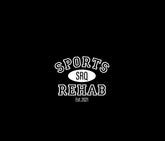Turf Toe Rehabilitation
Welcome to SRQ Sports Rehab! We understand that injuries like Turf Toe can be a real game-changer for athletes and active individuals. In this article, we'll explore the best evidence-based ways to rehabilitate Turf Toe, ensuring a speedy and effective recovery. We've got your back, Sarasota!
Anatomy of the Big Toe:
To tackle Turf Toe effectively, we first need to understand the anatomy. The big toe, also known as the hallux, is vital for maintaining balance and propelling our bodies forward during athletic activities. The injury, often experienced by athletes on artificial turf, occurs when the big toe is hyperextended. It can lead to pain, swelling, and decreased mobility.
Physical Therapy and Intrinsic Foot Muscle Strengthening:
A cornerstone of Turf Toe rehabilitation is physical therapy. In particular, exercises that strengthen the intrinsic foot muscles are crucial. These muscles provide vital support to the arch of the foot. Strong foot muscles aid in stabilization, ultimately reducing the risk of future injuries.
References:
-
Ryan M., "Rehabilitation and return to sport after turf toe," Current Reviews in Musculoskeletal Medicine, 2019.
Improving Foot Biomechanics:
Rehabilitating Turf Toe isn't just about treating the symptoms. It's about addressing the underlying issues. Analyzing and correcting foot biomechanics can help prevent recurrences. A certified physical therapist can identify any deficiencies and design a custom plan.
Stretching and Flexibility:
Stretching can significantly aid recovery and prevent stiffness. Gentle stretching exercises, particularly those targeting the calf muscles and the plantar fascia, can alleviate pain and improve mobility.
Orthotics and Proper Footwear:
Custom orthotics can provide support and alignment, reducing strain on the big toe joint. Opt for footwear with good arch support and cushioning. This goes a long way in reducing the risk of future injuries.
References: 2. Queen R., et al., "The effectiveness of a neoprene valgus force brace for reducing the pain of first metatarsophalangeal joint osteoarthritis," Prosthetics and Orthotics International, 2018.
Soft Tissue Mobilizations and Dry Needling:
Soft tissue mobilization and dry needling can be effective in reducing pain and restoring range of motion. A skilled physical therapist can expertly employ these techniques to expedite your healing process.
References: 3. Bae Y., et al., "The effectiveness of myofascial release techniques for patients with soft tissue injury and myofascial pain: a systematic review," Journal of Physical Therapy Science, 2017.
Conclusion:
Rehabilitating Turf Toe is not a one-size-fits-all endeavor. The evidence-based approaches outlined here, combined with a personalized treatment plan from our experts at SRQ Sports Rehab, will pave the way to a full recovery. Don't let Turf Toe be the game-changer in your life; take control of your rehabilitation journey today!
Remember, healing takes time. Be patient with yourself, follow your treatment plan diligently, and before you know it, you'll be back on the field, court, or track, stronger and more resilient than ever.
If you have any questions or would like to schedule a consultation with our experts, don't hesitate to reach out to us at SRQ Sports Rehab. Your comeback story starts here!

